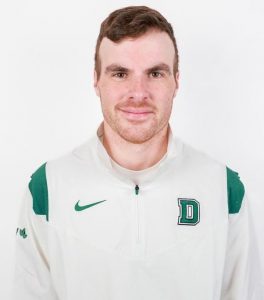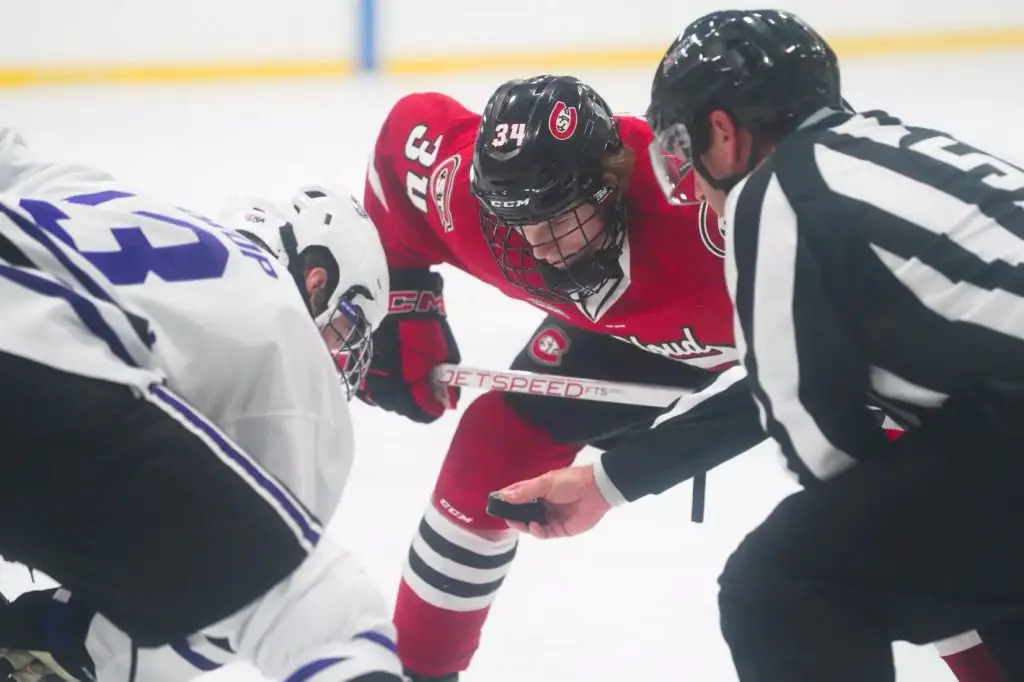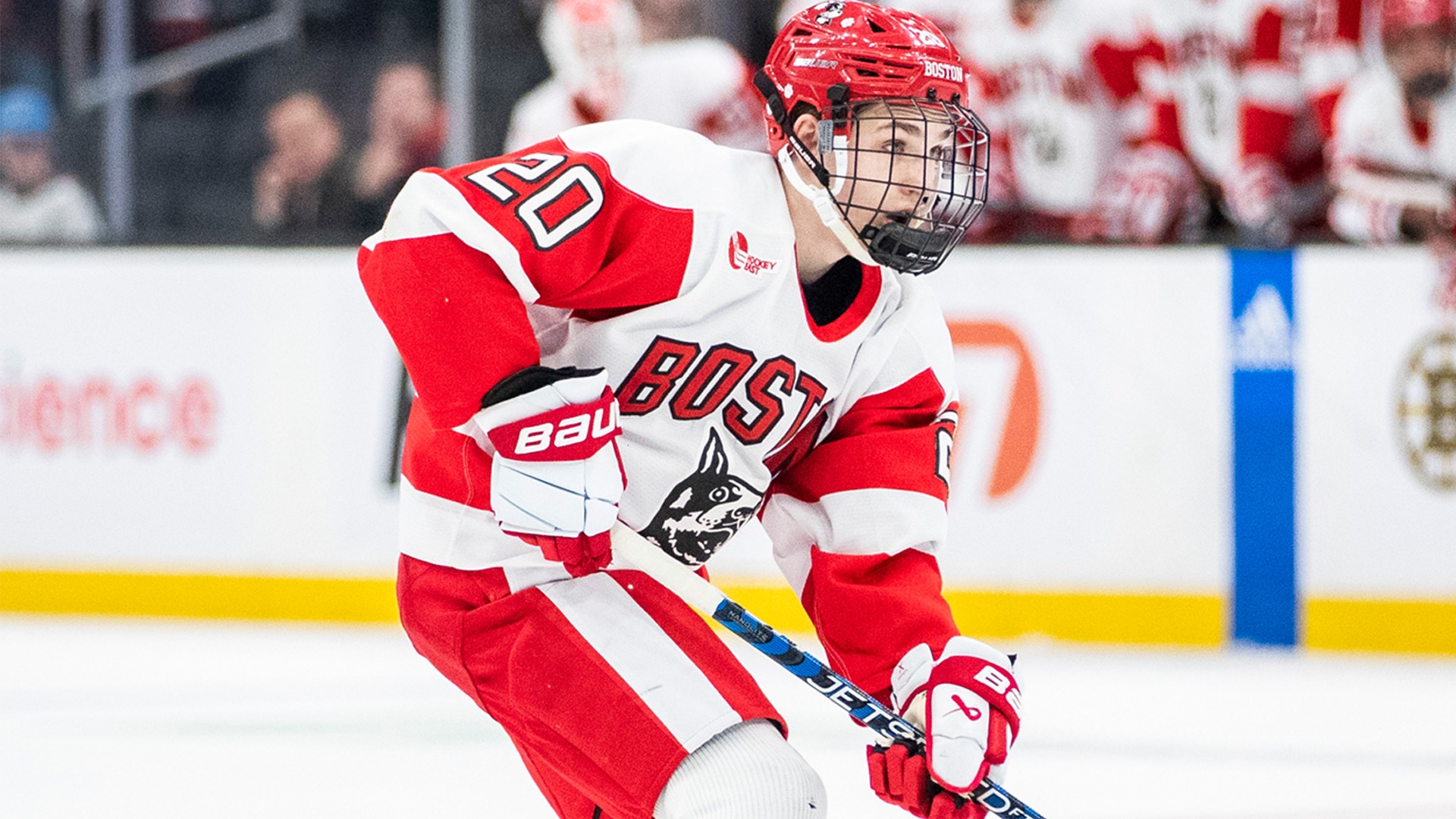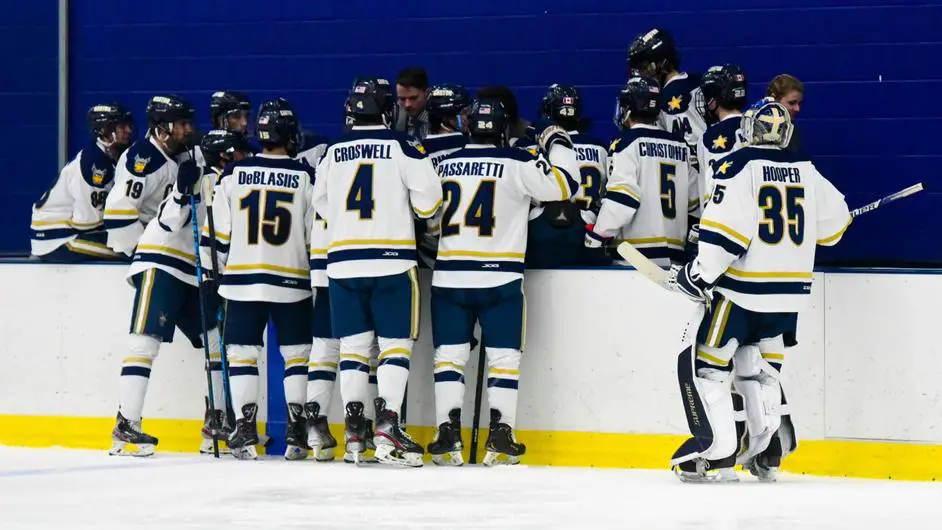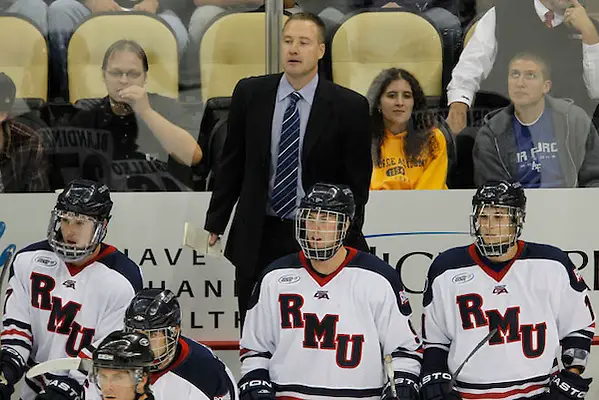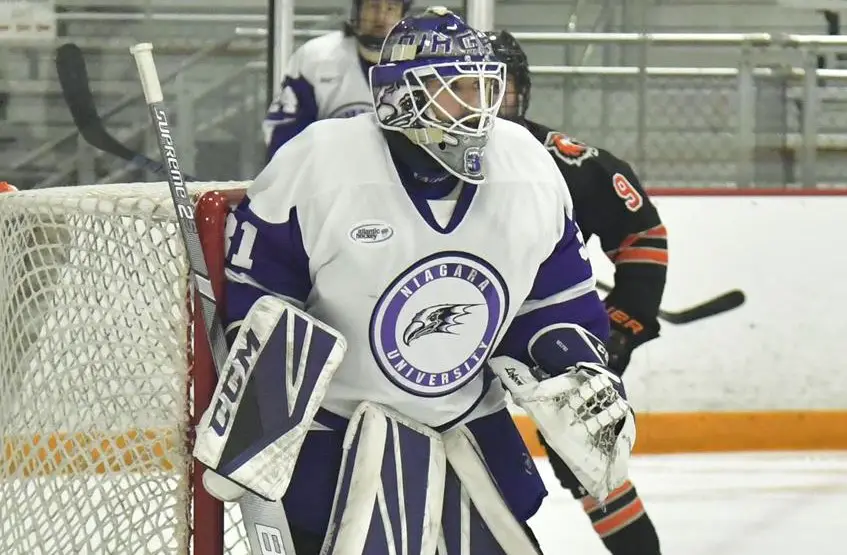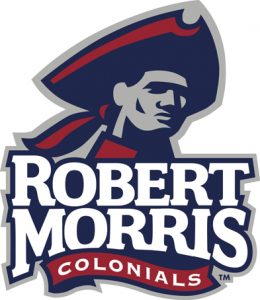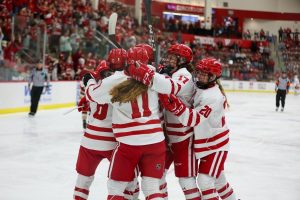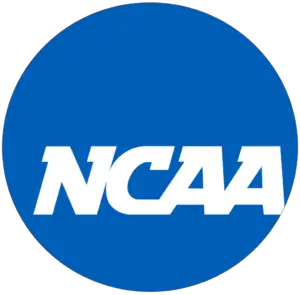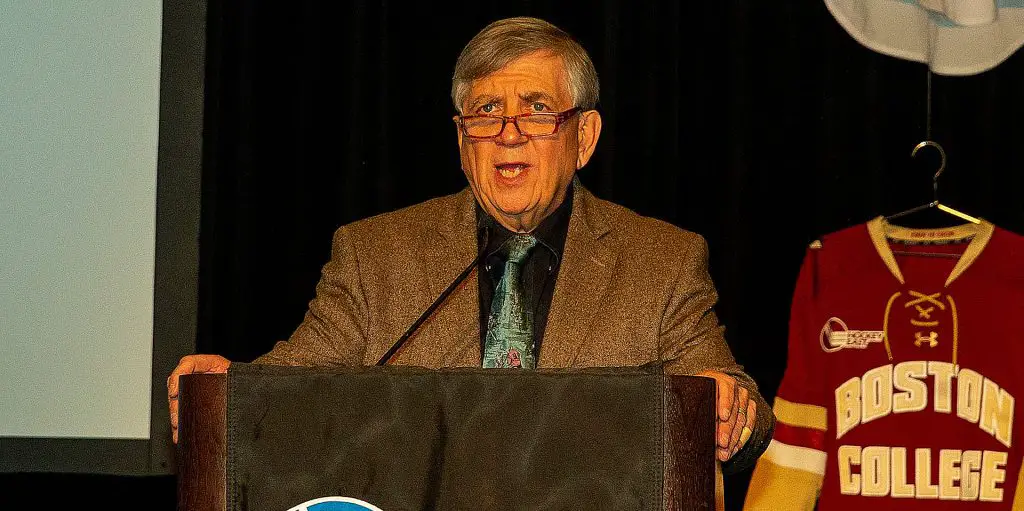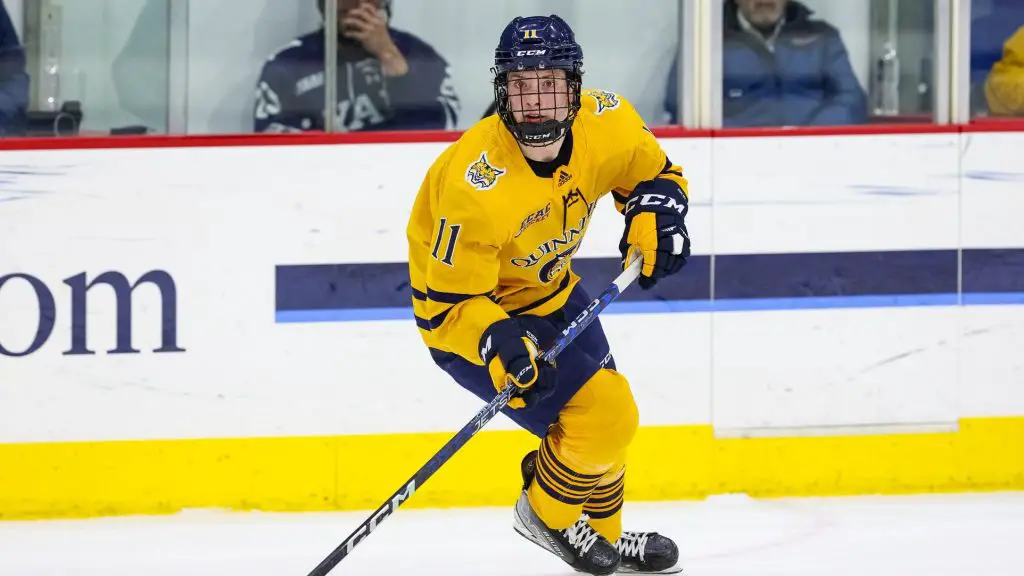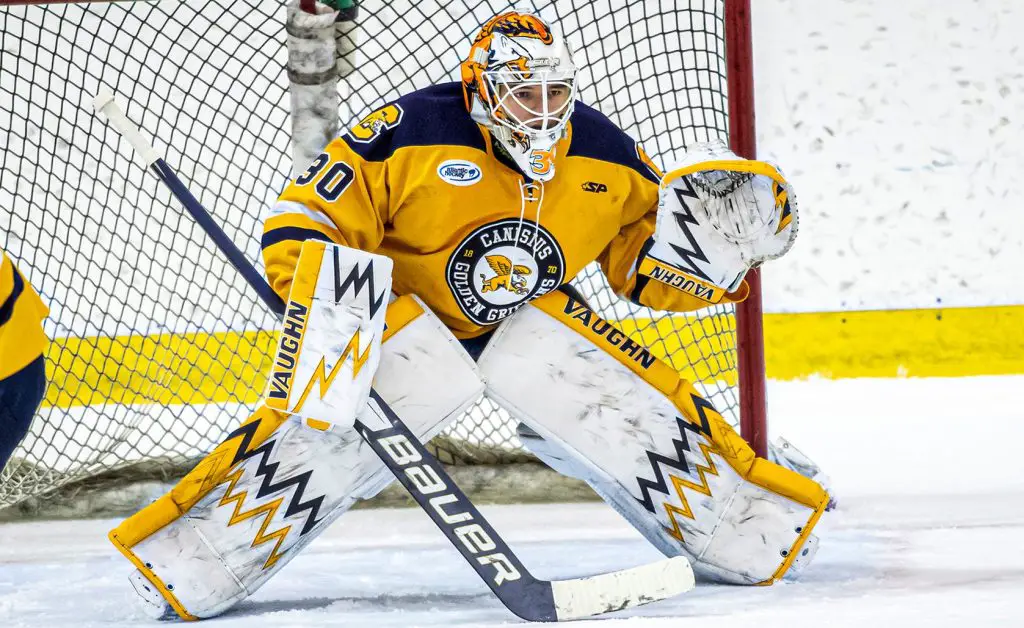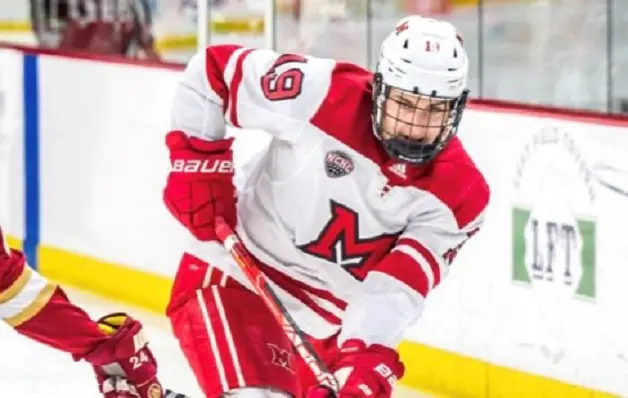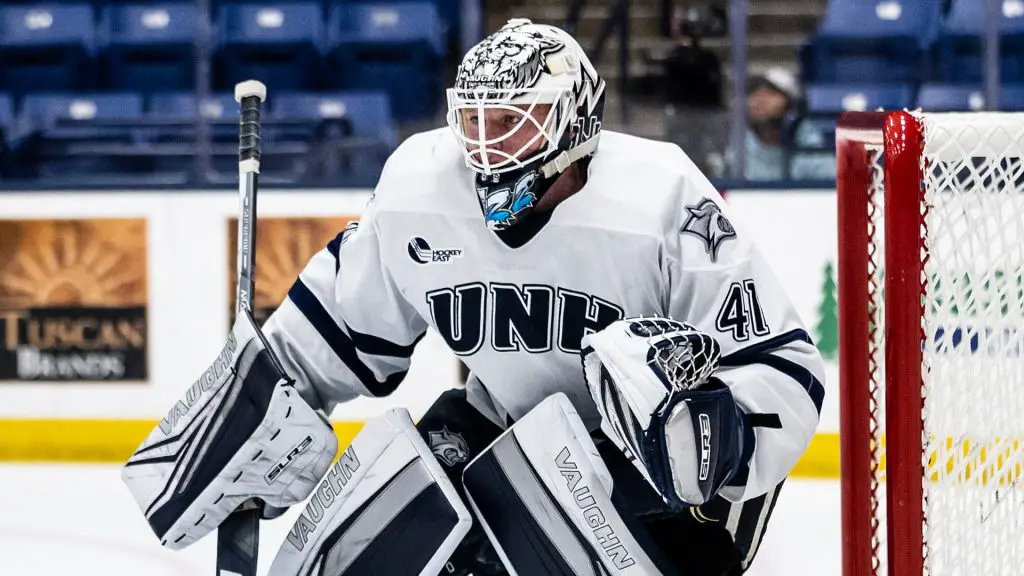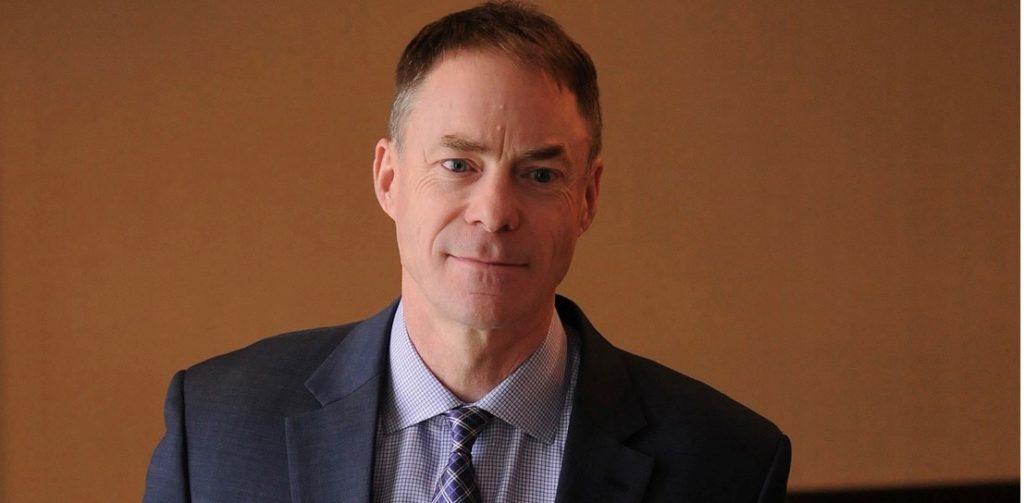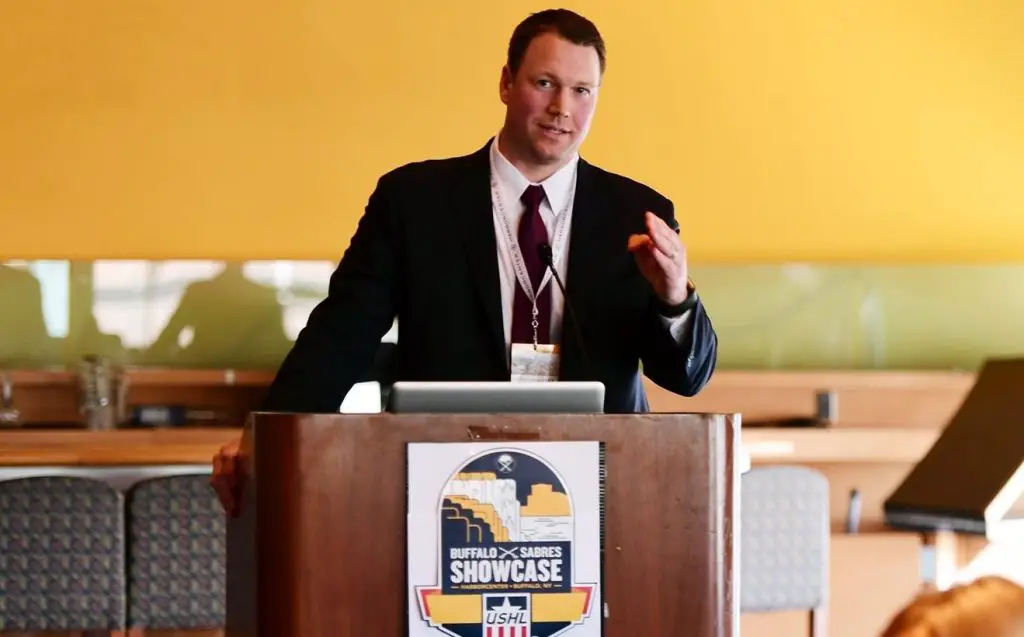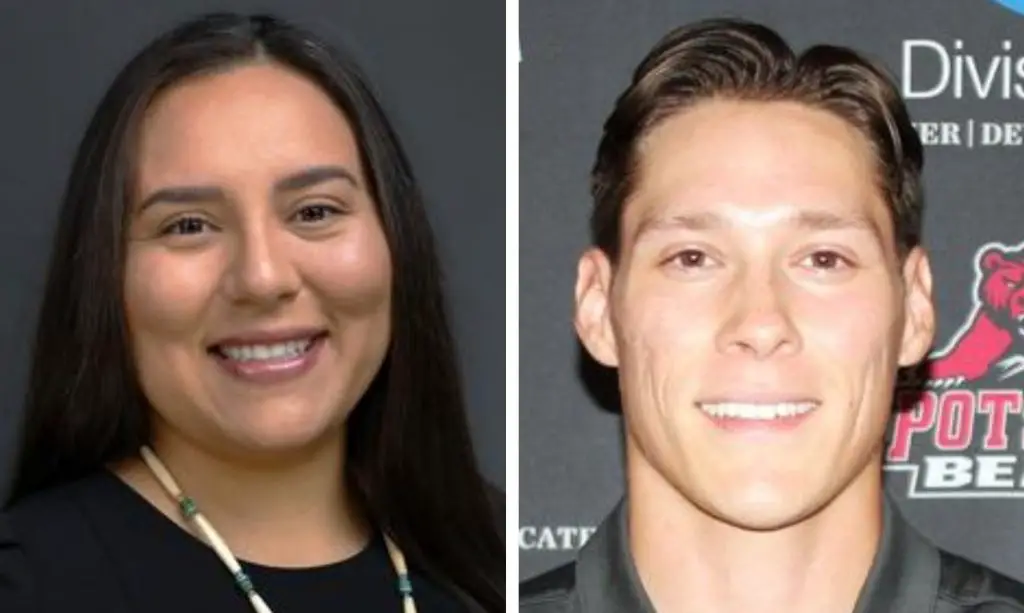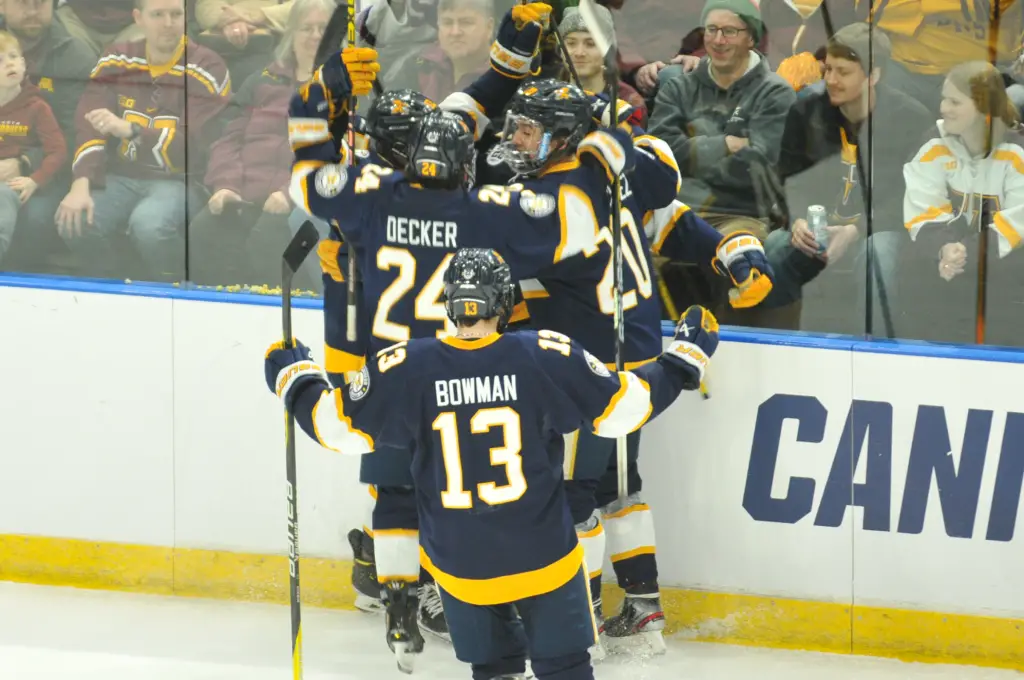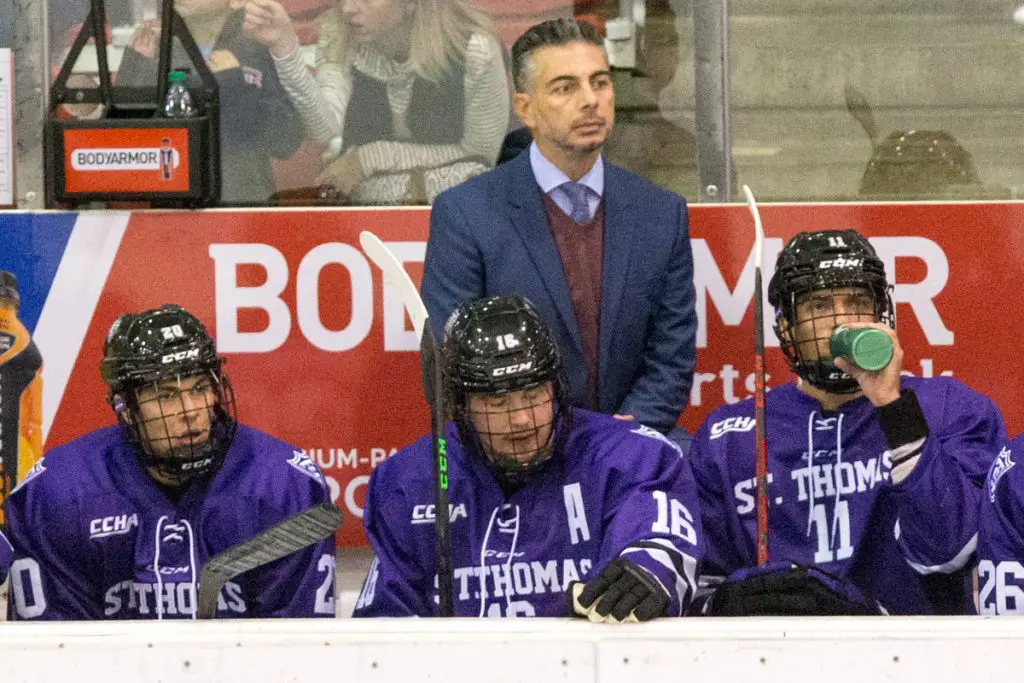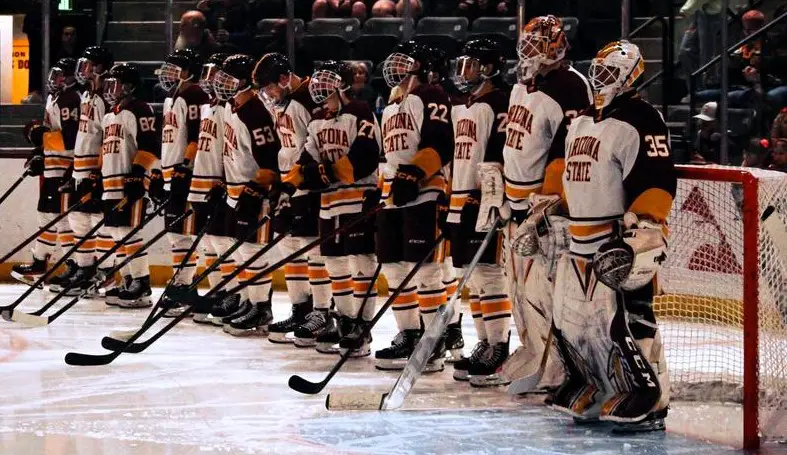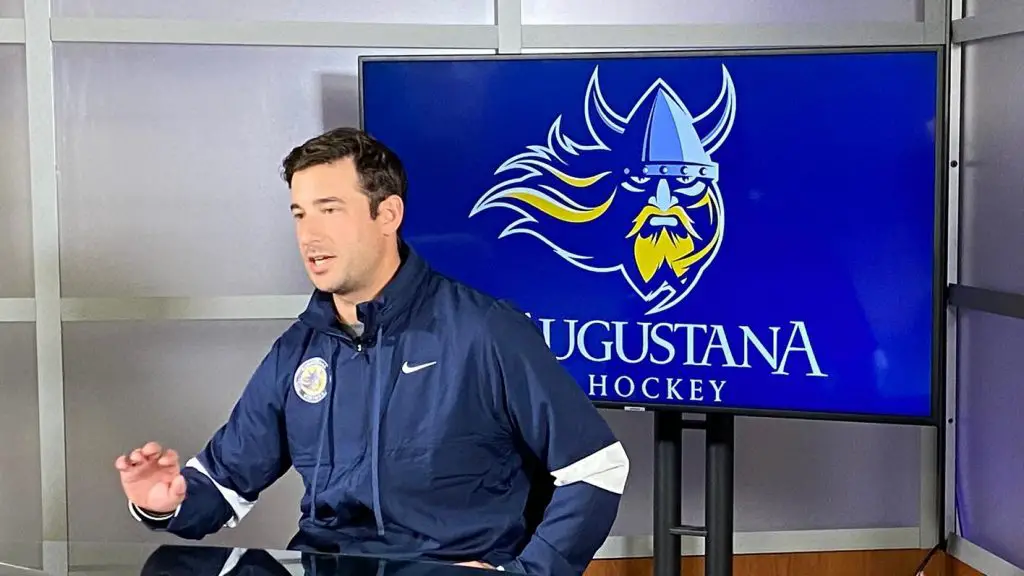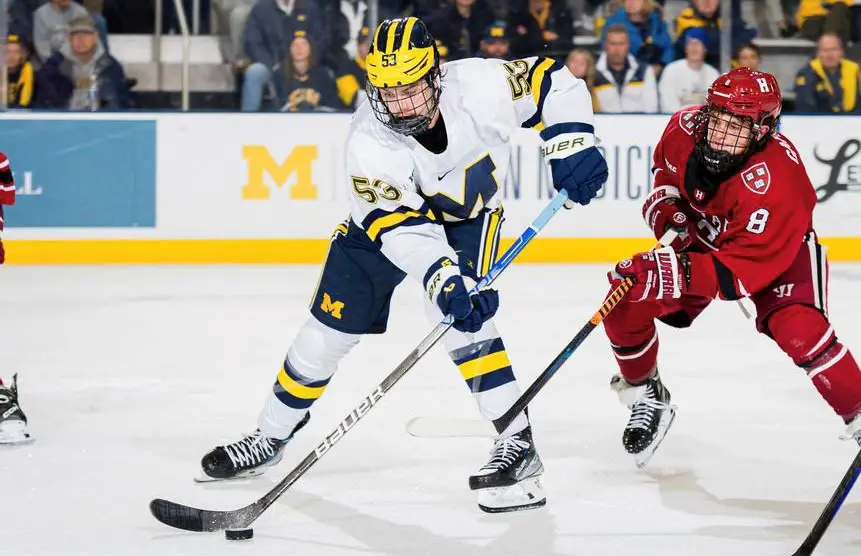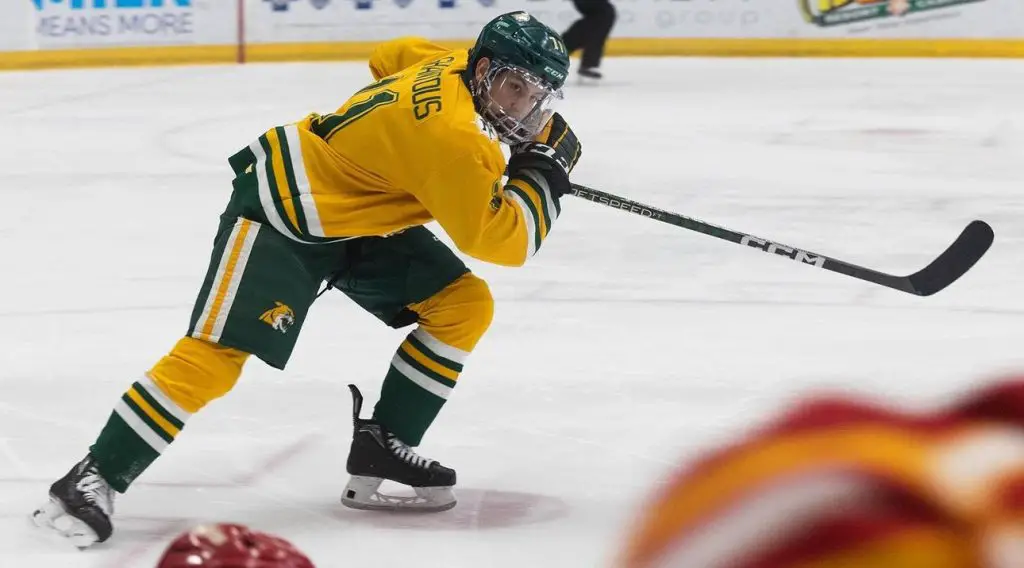
It was an unusually active offseason, at least by CCHA standards.
A coaching change at Minnesota State kicked off the summer, with Mike Hastings leaving for Wisconsin and taking four players and most of his coaching staff with him.
Then the summer ended with the situation in Bowling Green that saw head coach Ty Eigner and three as-yet-unknown players suspended for an alleged hazing incident that is still being investigated. Austen Swankler, the CCHA coaches and media’s preseason player of the year, decided to transfer from Bowling Green to Michigan Tech as a result.
Both events have contributed to the general uncertainty around the league this season: For the first time since realignment, it appears that Minnesota State is not going to be a front-runner for the MacNaughton Cup.
“This is my 23rd year as a head coach, and I don’t think I’ve ever been in a tighter league,” Bemidji State coach Tom Serratore said during the league’s virtual media day last month. “You can take a look at the preseason polls – and they’re just preseason polls – but, how tight everything is with the voting. It just tells you that even the coaches, we don’t know. I’m trying to figure things out every year. I think, in our league, it wouldn’t surprise me if any one of the eight teams won this league.”
The team that most coaches and media thinks is going to win it all, Michigan Tech, returns 20 players from a season that saw them nearly beat Minnesota State on the last day of the regular season to nick the MacNaughton Cup, including All-American goaltender Blake Pietila, CCHA rookie of the year Kyle Kukkonen, and all-league forward Ryland Mosley.
“We have significant players returning at key positions. When you return an All-American in Blake Pietila, that’s a good place to start,” Michigan Tech coach Joe Shawhan said.
The team the Huskies are looking to unseat from the top spot – the one they came so close to defeating last season – will look much different, both behind the bench and on the ice. Luke Strand takes over as the new head coach at Minnesota State and will have some big shoes to fill in Mankato, where Hastings won eight MacNughton Cups (six in the WCHA and two in the CCHA), guided the Mavericks to eight NCAA tournament appearances and two Frozen Fours.
Strand said he knows what sort of legacy he is inheriting with the Minnesota State program and knows that his players are motivated to prove the doubters wrong. MSU was picked to finish fourth and sixth by the media and coaches, respectively, after losing 11 key players to the portal, the pros or graduation.
“I think the polls are an opportunity for us to take everyone else’s opinion and what they think of the guys that stayed, the guys the came in the staff that came in, so if that’s their poll position for us, then it’s our job to make sure they’re incorrect,” said Strand, who was an assistant at Ohio State last season and has a long history as head coach of the USHL’s Sioux City Musketeers. “We’re not chasing the polls; we’re chasing the last game of the year.”
The other big offseason story has yet to be fully resolved. As Saturday’s start of the season approaches, we’re no closer to figuring out what happened in Bowling Green. Eigner, as of this writing, remains suspended, and assistant coach Curtis Carr will take over a team that all of a sudden is without arguably the best player in the league.
Carr, who was asked during the media conference how the team has handled the upheaval within the program, would not take specific questions about either the suspensions or Swankler.
“The main message is to control what we can control and just make sure we’re coming to the rink with positive energy and still focused on our daily objectives and getting better,” said Carr when asked generally about the controversies within the program. “Just make sure we’re here doing the best that we can to continue to move forward.”
The Falcons were picked to finish third by both the media and the coaches, but those polls were conducted before the news of the incident broke, and while Swankler was still on the team.
Finally, there is officially another new member of the CCHA (and a new program in Division I hockey). First-year program Augustana will play its first games this weekend against Mike Hastings’ Wisconsin. The Vikings, coached by former Minnesota assistant coach Garrett Raboin, are not playing a full league schedule in their first two seasons of Division I, so their games will not count towards the CCHA standings, although they will count in the Pairwise Rankings.
“We’re brand new, and we have 27 new players. We had two with us on campus last year that didn’t compete, but this is our start. We’re excited to play a game, heavy with non-conference opponents, but we’ll be able to learn a lot about our league and their members,” Raboin said. “We’re at the very beginning, so we’re getting our fundamentals in, getting comfortable with each other. And it goes both ways — us with the players on the ice, the players with us on the ice — and we’re just really looking forward to competing and growing.”
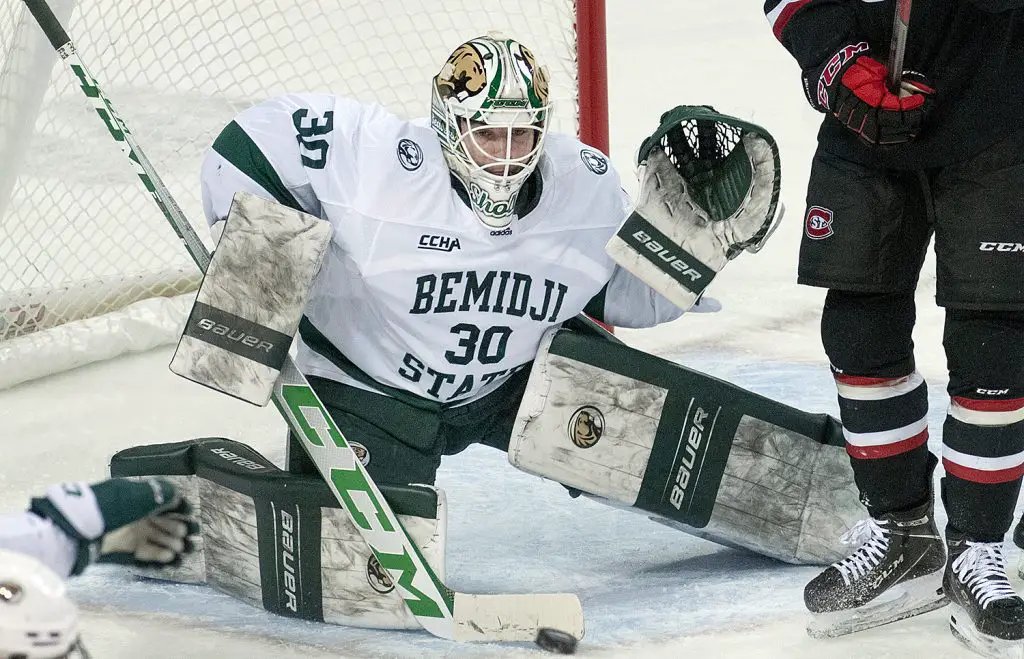
BEMIDJI STATE
HEAD COACH: Tom Serratore (entering his 23rd season at BSU)
LAST SEASON: 14-17-5 (12-11-3 for fifth in CCHA)
KEY RETURNING PLAYERS: F Lleyton Roed (So., 13g-18a-31pts); D Kyle Looft (Sr., 5g-3a-8pts); G Mattias Sholl (Jr., 11-13-5, .908SV%; 2.26 GAA); F Jere Vaisanen (Jr., 7g-10a-17pts).
KEY LOSSES: D Elias Rosen (4-24-28); F Ross Armour (14-8-22); D Will Zmolek (4-17-21); F Mitchell Martan (8-10-18).
KEY ADDITIONS: D Erik Pohlklamp (Cedar Rapids, USHL); F Liam Engström (Örebro HK, Sweden); F Rhys Chiddenton (Georgetown Raiders, OJHL).
2023-24 PREDICTION: The Beavers are one of the few teams to lose absolutely nobody to the transfer portal–something that’s increasingly becoming a rarity in the modern college hockey world. They did, however, lose two big contributors to graduation. Their defensive pairing of Elias Rosen and Will Zmolek–both fifth year seniors who played countless minutes together in their time in Bemidji–won’t be easy to replace, from an experience or a points standpoint. Still, BSU has nearly every other defender back, plus highly-touted San Jose Sharks draft pick Erik Pohlkamp, who was named the league’s rookie of the year and is one of the most promising prospects to suit up for the Beavers in a long time. Expect BSU to be competing for home ice this year.
2023-24 PREDICTED FINISH: 4th
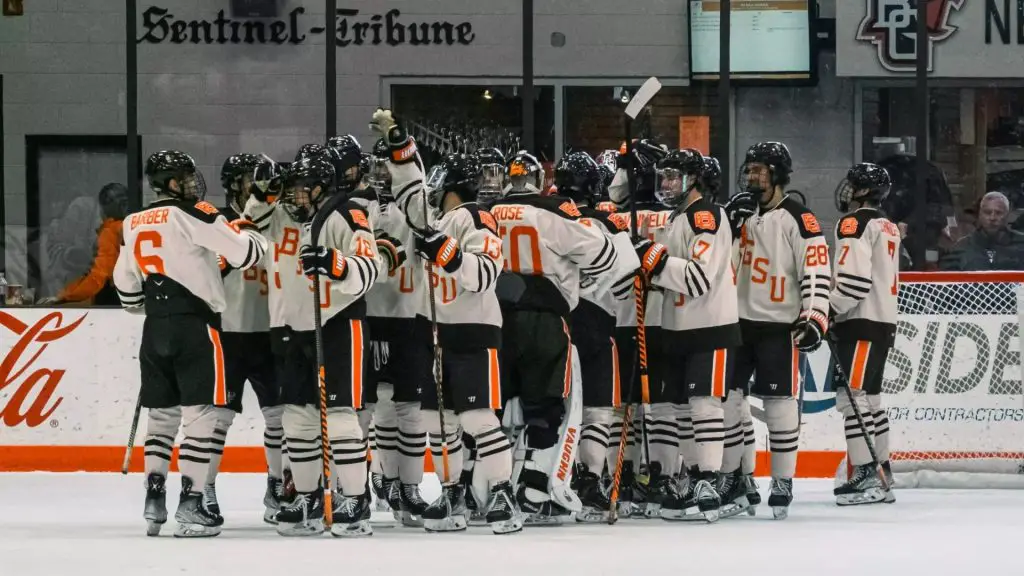
BOWLING GREEN
HEAD COACH: Ty Eigner (entering his fifth season at BSU; is suspended pending an investigation, team will be coached by assistant Curtis Carr in the interim)
LAST SEASON: 15-19-2 (12-12-2 for third in CCHA)
KEY RETURNING PLAYERS: F Ryan O’Hara (11g-19a-30pts); F Ethan Scardinia (11g-5a-16pts); D Ben Wozney (2g-13a-15pts); G Christian Stoever (11-17-2; .914 SV%, and 2.86n GAA).
KEY LOSSES: F Austen Swankler (16g-25a-44pts); F Chase Grescock (11g-20a-3pts1); F Nathan Burke (17g-12a-29pts).
KEY ADDITIONS: F Josh Nodler (UMass, Hockey East), F Spencer Kersten (Princeton, ECAC), F Owen Ozar (Denver, NCHC); F Ben Doran (Sioux City, USHL).
2023-24 PREDICTION: The Falcons’ situation is very much in flux. Just after the CCHA announced its preseason awards and predictions last month, it was reported that BG head coach Ty Eigner and three unknown players were suspended pending an investigation into an alleged hazing incident involving they hockey team. That same day, it was also announced that Austen Swankler, the team’s leading scorer and the man picked to be the CCHA’s preseason player of the year by both the coaches and the media, announced he was transferring out of the program. With all that uncertainty, it’s really tough to know where the Falcons are going to end up. They weren’t all about Swankler last season – they had a number of offensive options who are back this year – but interim head coach Curtis Carr is certainly going to have a very difficult job as the program tries to figure out exactly what happened.
2023-24 PREDICTED FINISH: 6th
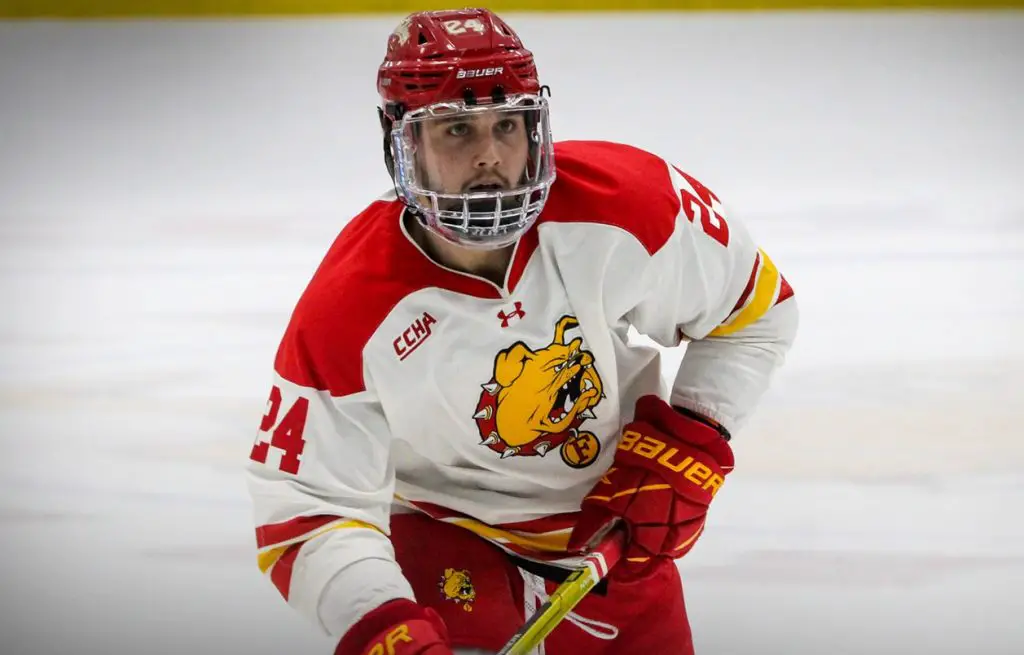
FERRIS STATE
HEAD COACH: Bob Daniels (entering his 32nd season at FSU)
LAST SEASON: 14-19-4 (9-14-3 for sixth in CCHA)
KEY RETURNING PLAYERS: F Jason Brancheau (13g-18a-21pts); F Stepan Pokorny (6g-15a-21pts); F Antonio Venuto (6g-9a-15pts); D Brendan MacLaren (4g-11a-15pts); F Tyler Schleppe (9g-6a-15).
KEY LOSSES: F Bradley Marek (7g-10a-17pts); D Blake Evennou (1g-14a-15pts); F Mitch Deelstra (7g-6a-13pts).
KEY ADDITIONS: D Nick Hale (Holy Cross, AHA); F Holden Doell (Battlefords, SJHL); F Luigi Benincasa (Spruce Grove, AJHL).
2023-24 PREDICTION: The Bulldogs won 14 games last season and made it out of the first round of the playoffs for the first time since 2016. They were also very close to gaining home ice in the first round of the playoffs, but couldn’t quite get it done down the stretch. Ferris actually has a decent amount of scoring coming back, so I would think they’re going to be in a similar situation this season–fighting for home ice but ultimately coming up short.
2023-24 PREDICTED FINISH: 7th
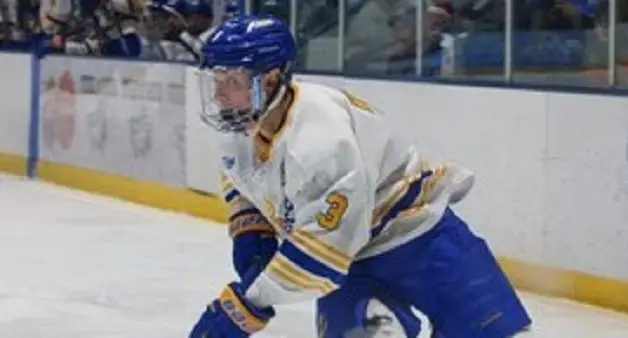
LAKE SUPERIOR STATE
HEAD COACH: Damon Whitten (entering his 10th season at LSSU)
LAST SEASON: 9-25-2 (8-17-1 for eighth in CCHA)
KEY RETURNING PLAYERS: F Dawson Tritt (9g-8a-17pts); F Harrison Roy (11g-4a-15pts); G Ethan Langenegger (6-15-2, .910 SV%, 2.96 GAA).
KEY LOSSES: F Louis Boudon (9g-13a-22pts); D Jacob Bengtsson (1g-20a-21pts); F Brandon Puricelli (6g-8a-14pts).
KEY ADDITIONS: D Nate Schweitzer (Colorado College, NCHC); F John Herrington (Prince George, BCHL); F Reagan Milburn (Vernon, BCHL); D Jack Blanchett (Powell, BCHL).
2023-24 PREDICTION: After finishing last place in the conference a season ago, LSSU lost both of its top offensive producers in Louis Boudon (to graduation) and Jacob Bengtsson (to the portal). That opens up some opportunities for different players to contribute, but with 13 newcomers–11 freshmen and two transfers–it might take a little while for the Lakers to gel. I think until they can show that they have come together as a team, I can’t see them competing for home ice just yet.
2023-24 PREDICTED FINISH: 8th
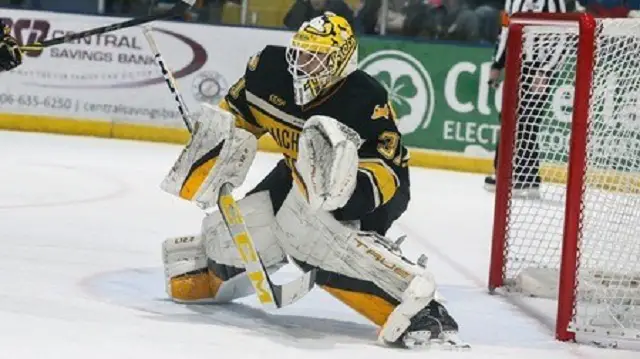
MICHIGAN TECH
HEAD COACH: Joe Shawhan (entering his seventh season at Tech)
LAST SEASON: 21-11-4 (15-7-4 for second in CCHA)
KEY RETURNING PLAYERS: G Blake Pietila (23-11-3; .934 SV%; 2.15 GAA); F Kyle Kukkonen (18g-9a-27pts); F Ryland Mosley (12g-19a-31pts); F Logan Pietila (11g-10a-21pts); D Jed Pietila (1g-15a-16pts).
KEY LOSSES: F Parker Saretsky (7g-13a-20pts); D Brett Thorne (3g-15a-18pts); F Tristan Ashbrook (10g-7a-17pts).
KEY ADDITIONS: F Austen Swankler (Bowling Green, CCHA); D Matthew Campbell (Quinnipiac, ECAC); D Chase Pietila (Lincoln, USHL).
2023-24 PREDICTION: After nearly taking the MacNaughton Cup from Minnesota State a year ago, Michigan Tech has emerged from a lively CCHA offseason as the overwhelming favorites coming into 2023-24. Blake Pietila’s return to the Huskies’ net gives Tech an obvious advantage on defense, but what most are surely going to be looking at this season is just how much better the Huskies’ explosive offense got. Kyle Kukkonen and Ryland Mosley already packed quite the punch last season, but the addition of Austen Swankler in the second semester has goaltenders across the CCHA checking the scheduler twice just to make sure they don’t have to play the Huskies after the holidays. This team has lots of experience and wants to make up for what was a disappointing end to last season, so expect a hungry team who will be the odds-on favorite for the MacNaughton.
2023-24 PREDICTED FINISH: 1st
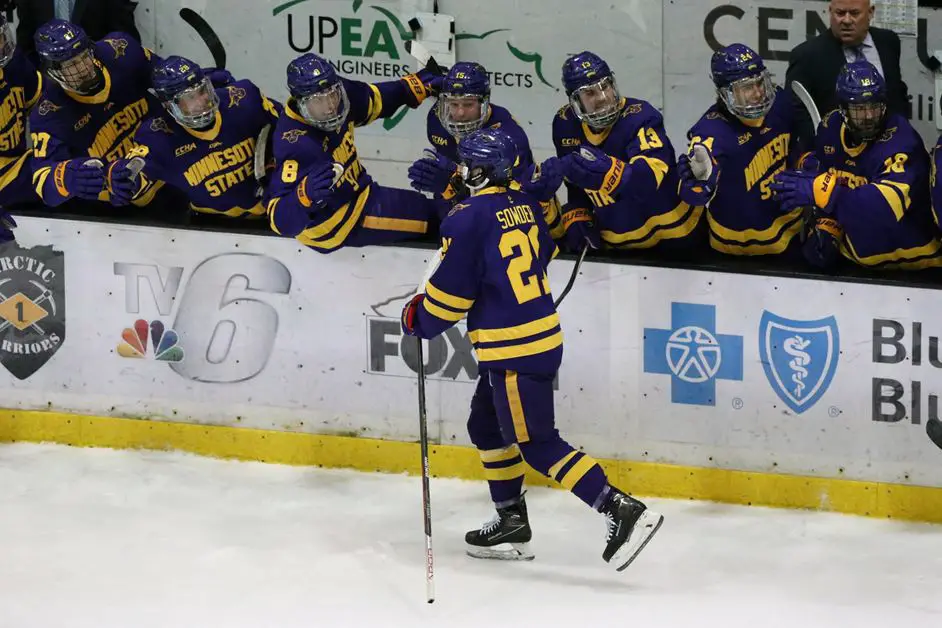
MINNESOTA STATE
HEAD COACH: Luke Strand (entering his first season at MSU)
LAST SEASON: 25-13-1 (16-9-1 for first in CCHA)
KEY RETURNING PLAYERS: F Lucas Sowder (5g-9a-14pts); F Sam Morton (6g-2a-8pts); G Keenan Rancier (19-10-1, .914 SV%, 1.86 GAA).
KEY LOSSES: F David Silye (23-16-39); D Jake Livingstone (8-27-35); Ryan Sandelin (14-15-29); F Christian Fitzgerald (16-13-29); F Brendan Furry (9-19-28); D Akito Hirose (4-23-27).
KEY ADDITIONS: F Jordan Steinmetz (St. Lawrence, ECAC); D Brandon Koch (Air Force, AHA); D Jordan Power (Clarkson, ECAC).
2023-24 PREDICTION: It might take until fans actually see them take the ice to realize how different the guys wearing purple and gold are going to look from this season onwards. As we all know, former head coach Mike Hastings went to Wisconsin, taking the bulk of his coaching staff and four players with him. It’s a wonder he didn’t take the Mayo Clinic Health System Event Center’s zamboni with him, too. In the eyes of Mavericks fans, he might as well have. But they shouldn’t count out new head coach Luke Strand. Strand, an experienced junior hockey coach who was most recently an assistant at Ohio State, brings a wealth of experience to the job and is poised to remake Minnesota State in his image. I don’t think it will take too long before he puts his stamp on the program, but after 11 years under Hastings, it’s only natural that there will be some growing pains. Considering the fact that MSU lost 11 players to either the pros, graduation or the transfer portal, it might take a while for them to gel. I don’t think they’re going to be title contenders this year, but give it time.
2023-24 PREDICTED FINISH: 5th
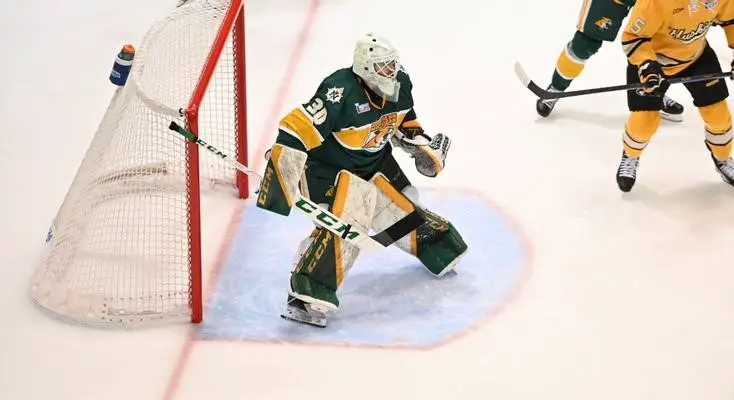
NORTHERN MICHIGAN
HEAD COACH: Grant Potulny (entering his seventh season at NMU)
LAST SEASON: 21-17-0 (14-12-0 for fourth in CCHA)
KEY RETURNING PLAYERS: F André Ghantous (13g-25a-38pts); F Artem Shlaine (11g-21a-32pts); F Kristof Papp (11g-15a-26pts); D Josh Zinger (3g-13a-16pts); G Beni Halasz (19-15-0, .919 SV%, 2.32 GAA)
KEY LOSSES: F AJ Vanderbeck (13g-19a-32pts); F Joey Larson (13g-14a-27pts).
KEY ADDITIONS: F Jack Perbix (Western Michigan, NCHC); F Mitch Deelstra (Ferris State, CCHA); D Jeppe Urup (Sacred Heart, AHA); D Viking Gustafsson Nyberg (Leksands IF, Sweden).
2023-24 PREDICTION: Much like their Michigan Tech rivals, Northern Michigan was also oh-so-close to winning some silverware last season, taking Minnesota State to overtime in the CCHA title game before falling to the Mavericks in Mankato. And like the Huskies, the Wildcats have also reloaded for the 2023-24 season. NMU is (likely) the only other team that will be able to mount a serious challenge for the MacNaughton Cup at season’s end. Not only do the Wildcats return André Ghantous–one of the top scorers in the CCHA–but they also will return to Marquette with their rink slightly smaller. The Berry Events Center is ditching the Olympic-sized ice for a hybrid sheet, which might help them score even more than they did last season–a league-best 3.24 goals a game. Combined with the fact that they return nearly everyone on the blueline and goaltender Beni Halsz, expect the Wildcats to compete for the title this year.
2023-24 PREDICTED FINISH: 2nd
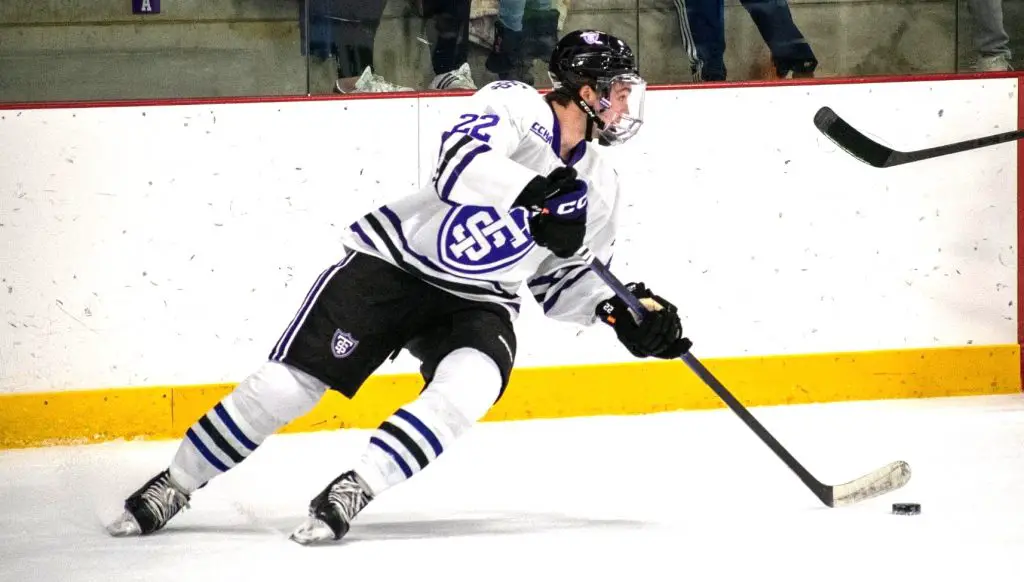
ST. THOMAS
HEAD COACH: Rico Blasi (entering his third season at UST)
LAST SEASON: 11-23-2 (10-14-2 for seventh in CCHA)
KEY RETURNING PLAYERS: F Mack Byers (18g-8a-26pts); F Lucas Wahlin (6g-15a-21pts), F Luc Laylin (10g-11a-21pts); F Ryan O’Neill (3g-17a-20pts); D Ethan Gauer (3g-3a-6pts).
KEY LOSSES: F Josh Eernisse (14g-7a-21pts); F Jarrett Lee (1g-10a-11pts); D Trevor Zins (1g-7a-8pts).
KEY ADDITIONS: F Matthew Gleason (Colorado College, NCHC); D James Marooney (Ohio State, Big Ten); D Jake Ratzlaff (Madison, USHL).
2023-24 PREDICTION: Entering just its third season after elevating from Division III, St. Thomas is quickly making itself into one of the better programs in the CCHA. Just look no further than the coaches poll, which saw the Tommies garner a first-place vote from Michigan Tech head coach Joe Shawhan. Despite the fact that the Tommies are picked to finish only fifth in the coaches poll, the Huskies’ coach thinks the Tommies are going to be one of the better teams in the conference. There’s no reason to doubt Shawhan. St. Thomas coach Rico Blasi has helped the Tommies quickly find their footing, bringing in high-caliber recruits and transfers who have made an immediate impact. I actually picked them to finish third in the league–that may or may not happen, but I do expect them to be fighting for home ice at the end of the season.
2023-24 PREDICTED FINISH: 3rd
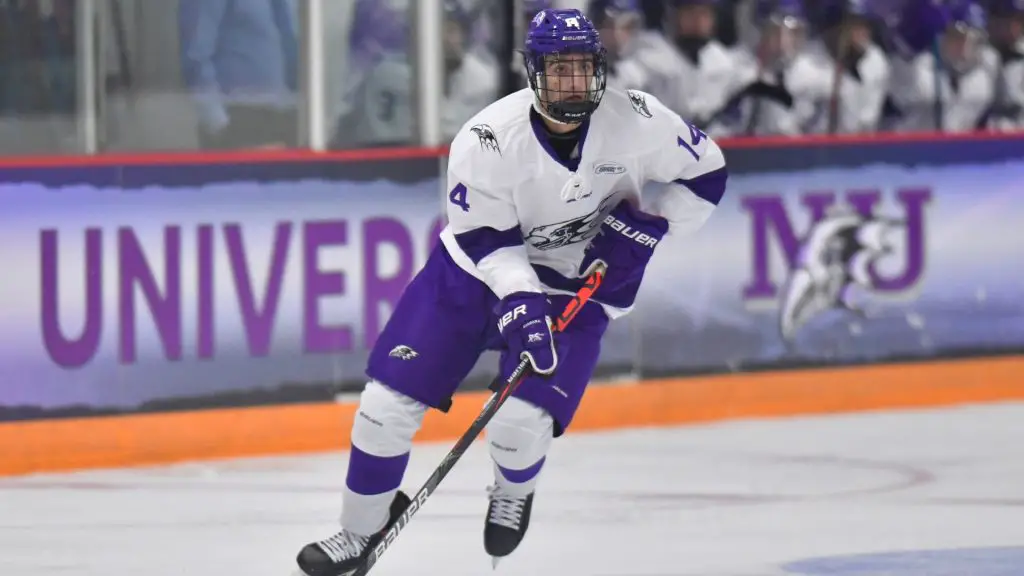
AUGUSTANA
HEAD COACH: Garrett Raboin (first season)
KEY PLAYERS: G Zack Rose (Bowling Green, CCHA); D Anthony Stark (Colgate, ECAC); D Evan McIntyre (Ohio State, Big Ten); F Arnaud Vachon (Colgate, ECAC); F Ryan Naumovski (Niagara, AHA).
2023-24 PREDICTION: I don’t think it’s controversial to say Augustana probably won’t be very good this season. But, much like when St. Thomas elevated to Division 1 two years ago, whether or not the Vikings are “good” isn’t really the point. As a first-year program reliant almost entirely on transfers and freshmen–with the exceptions of sophomores Ben Troumbly and Will Svenddal, who spend their entire freshmen seasons on campus with no team to practice with–figuring out this team’s identity is going to be the most important part of how the Vikings operate in their first few years of existence. And since they aren’t playing a full conference schedule for their first two seasons as a CCHA member, it will be easier for them to build an identity without necessarily worrying about points in the standings. I would say “success” for the Vikings in year one means stealing a win or two from some big-time opponents on the road and playing an exciting brand of hockey in front of the home fans when their on-campus rink opens in 2024, generating even more buzz for the years to come.
